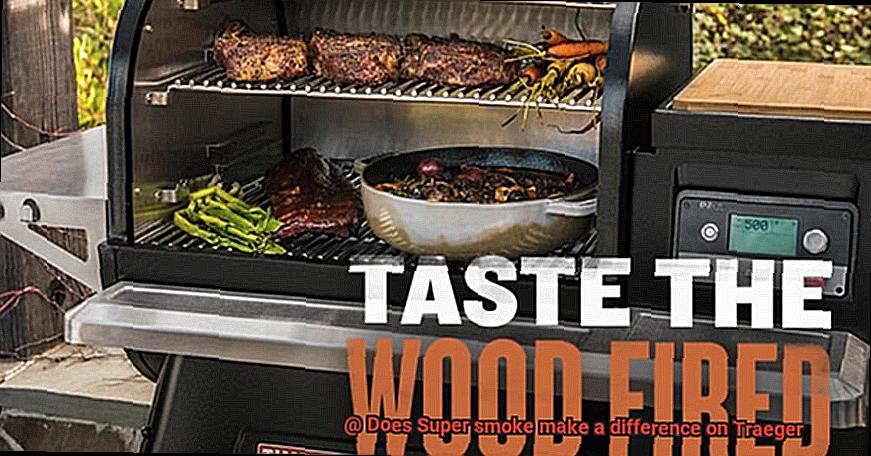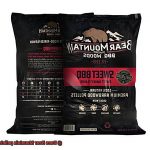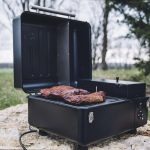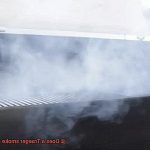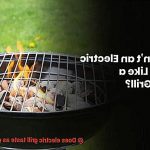When it comes to grilling, Traeger is the name that stands out. These grills are known for their exceptional quality, fuel efficiency, and mouth-watering taste. But what if we told you there’s a way to take your Traeger experience up a notch? Enter Super Smoke.
Super Smoke is an innovative feature exclusive to Traeger grills that promises to add an extra layer of smokiness to your meat. It claims to make your meat even more tender, juicy, and flavorful. But does it really work or is it just another marketing gimmick?
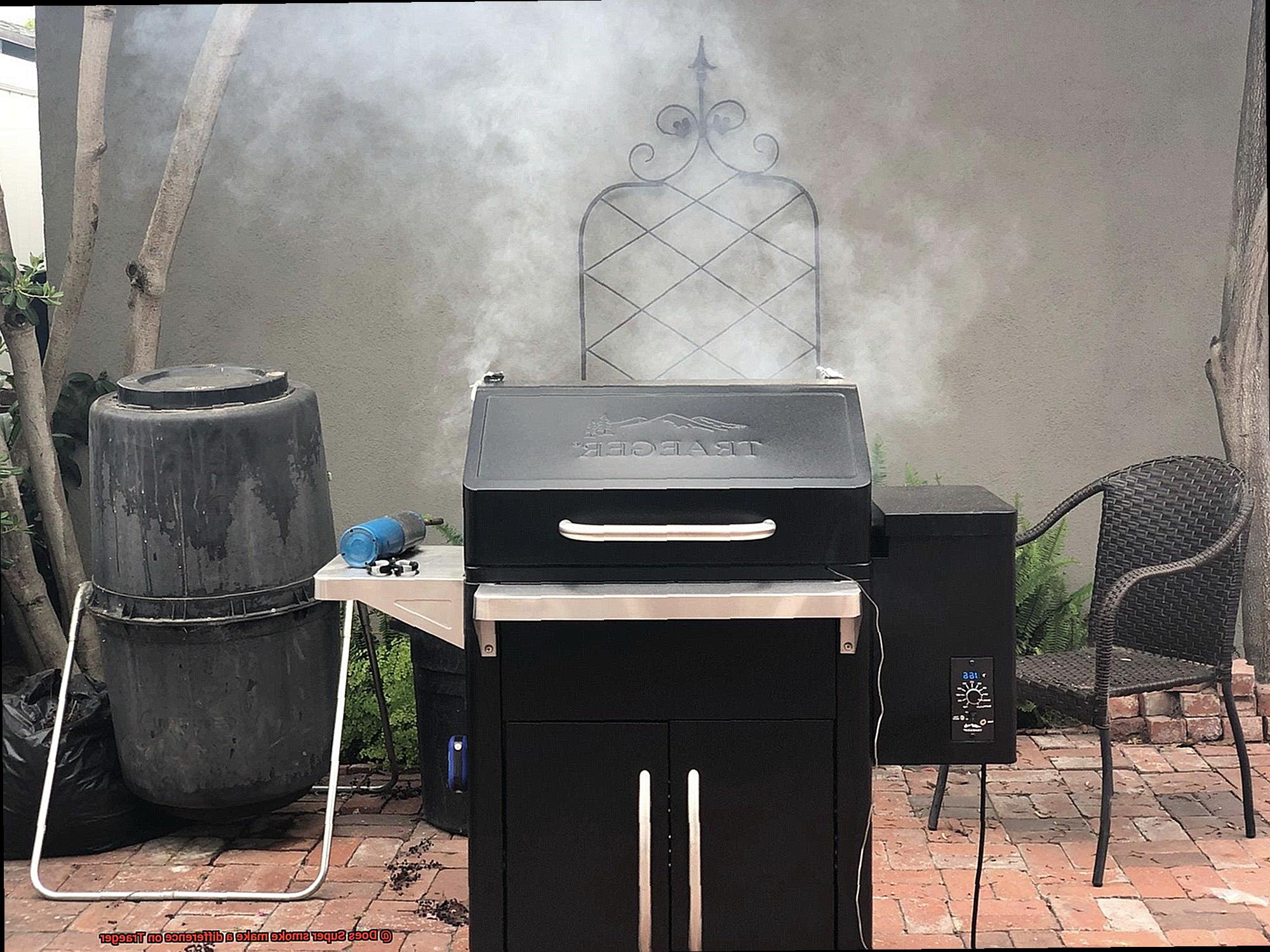
In this blog post, we’ll explore the impact of Super Smoke on Traeger grills. We’ll delve into how it works and whether it makes a noticeable difference in the final product. We’ll also examine the science behind the extra level of smoke flavoring and share customer experiences.
By the end of this post, you’ll have all the information you need to decide whether Super Smoke is worth trying out or not. So let’s dive into the world of Traeger Super Smoke and see if it’s truly the key to unlocking the ultimate barbecue experience.
Contents
How Does Super Smoke Work?
Let’s explore the science behind this unique feature.
Super Smoke is designed to add more smoke flavor to your food, especially when cooking at low temperatures. When activated, it increases the amount of smoke generated by the grill. This is achieved by extending the amount of time wood pellets smolder in the firepot, producing more smoke throughout the cooking process. The increased airflow caused by the faster feeding of pellets increases the oxygen supply to the fire, causing it to burn hotter and produce a denser smoke that penetrates the food more deeply.
But like any good thing, moderation is key. Overusing Super Smoke can lead to bitter and over-smoked food. It’s important to use this feature in moderation and experiment with it to find the right amount for your desired taste.
There are several factors that can affect how well Super Smoke works on your Traeger grill. The type of pellets used can have a big impact on the flavor and intensity of the smoke produced. Hardwood pellets like hickory or mesquite will produce a stronger smoke flavor than others. Additionally, cooler temperatures and higher humidity levels will result in more smoke being produced.
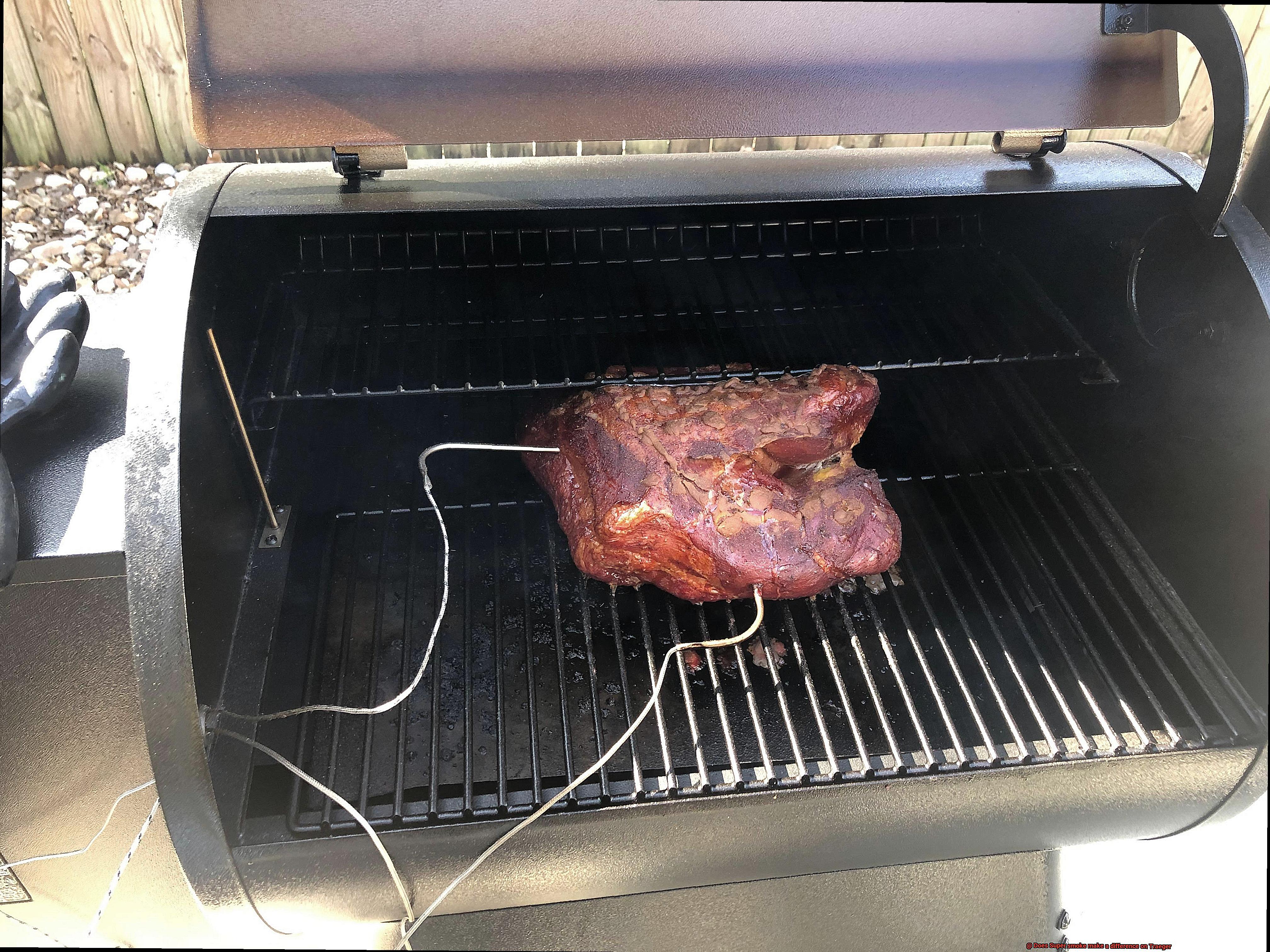
What are the Benefits of Using Super Smoke?
Look no further than Traeger’s Super Smoke feature. As a grilling expert, I can attest that this feature is a game-changer for anyone looking to take their grilling game to the next level.
The first benefit of Super Smoke is its ability to infuse more flavor into your food. This unique feature produces a denser and more flavorful smoke at lower temperatures, resulting in a deeper and richer smokiness that cannot be achieved with traditional smoking methods. Whether you’re grilling beef, poultry, fish, or vegetables, Super Smoke will elevate the taste and quality of your dishes.
But that’s not all. Super Smoke is also incredibly versatile. It can be used for a variety of cooking techniques, including slow-cooking, roasting, and even baking. It’s also perfect for smoking delicate foods such as fish or vegetables that require lower temperatures.
One of the biggest challenges in grilling is maintaining a consistent temperature throughout the cooking process. Super Smoke solves this problem by producing dense smoke that helps insulate the grill and maintain a steady temperature, resulting in perfectly cooked food every time.
Lastly, Super Smoke saves you time by reducing the need for constant monitoring of your grill. Simply set the temperature and let the grill do the work for you. No more worrying about constantly adjusting the temperature or checking on your food – Super Smoke produces consistent, high-quality results every time.
Is Super Smoke Necessary for All Types of Dishes?
Traeger grills offer the Super Smoke feature to provide a denser, more intense smoke flavor to your dishes. However, this feature may not always be necessary for all types of food. Here are some reasons why:
Not all dishes benefit from a strong smoky flavor. Delicate fish or vegetables can be easily overpowered by too much smoke, and using the Super Smoke feature may not be necessary or even desirable. In contrast, meats like brisket or ribs can benefit from a longer smoking time and more intense smoke flavor to achieve the desired flavor profile.
It is essential to experiment with different smoking techniques and levels of smoke to find what works best for each dish. The type of wood pellets used can also impact the level of smoke flavor. Ultimately, whether or not Super Smoke is necessary for a particular dish will depend on personal preference and the specific recipe being used.
Moreover, some people may prefer a stronger smoke flavor in all their dishes, while others may only want it in certain dishes. Factors such as cooking time and temperature can also influence the level of smoke flavor needed.
What are the Potential Downsides of Using Super Smoke?
While this feature on Traeger grills can certainly add depth to your dishes, it’s important to be aware of its limitations and potential downsides.
First and foremost, over-smoking is a real concern when it comes to using Super Smoke. This powerful feature can produce a lot of smoke, which can result in an overpowering flavor that some people may not enjoy. Plus, if you’re not careful, over-smoking can lead to dry or tough meat – a serious culinary faux pas. To prevent this, be sure to monitor your food closely and adjust the Super Smoke setting as needed.
In addition to potential flavor issues, using Super Smoke can also increase the overall cooking time of your meal. This is because it produces lower temperatures and more smoke, which can slow down the cooking process. If you’re working with a tight schedule, this may not be ideal. However, if you have the time to spare, the added flavor may be worth the wait.
Lastly, using Super Smoke can result in more ash and soot buildup on your grill. This is due to the slower burn rate of the wood pellets used with Super Smoke. While this may not be a huge issue, it could add some extra cleanup time to your grilling routine. To minimize this, be sure to clean your grill regularly and use high-quality wood pellets.
Tips for Using Super Smoke Effectively
This incredible feature increases the intensity and flavor of smoke produced by your grill, but it requires some know-how to use effectively. Here are five tips for using Super Smoke effectively on your Traeger grill:
Choose high-quality wood pellets
The quality of your wood pellets can make or break the flavor of your BBQ. For Super Smoke, it’s essential to choose pellets that are clean and flavorful. Traeger offers a variety of Super Smoke blends, such as hickory and oak, that are specially designed for this feature.
Preheat your grill
To ensure that your pellets ignite properly and produce more smoke, preheat your grill to the desired temperature before activating Super Smoke. This step is critical for consistent smoke output.
Use Super Smoke for shorter cook times
For a more noticeable Super Smoke flavor, aim for cook times of 30 minutes to an hour. This is especially crucial when cooking thinner cuts of meat, as longer cook times can result in over-smoked and bitter food.
Monitor the temperature
While using Super Smoke, keep an eye on the temperature of your grill and adjust it as needed. This ensures that your food cooks evenly and doesn’t become over-smoked.
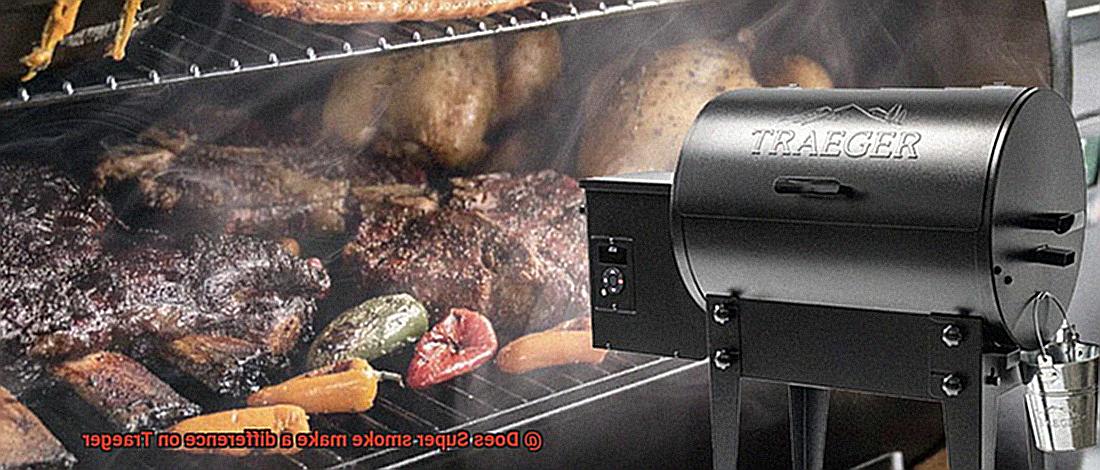
Clean and maintain your grill
The Super Smoke feature produces more smoke than usual, which means more residue left behind in your grill. Clean your grill thoroughly with a grill brush and remove any excess ash from the firepot after each use.
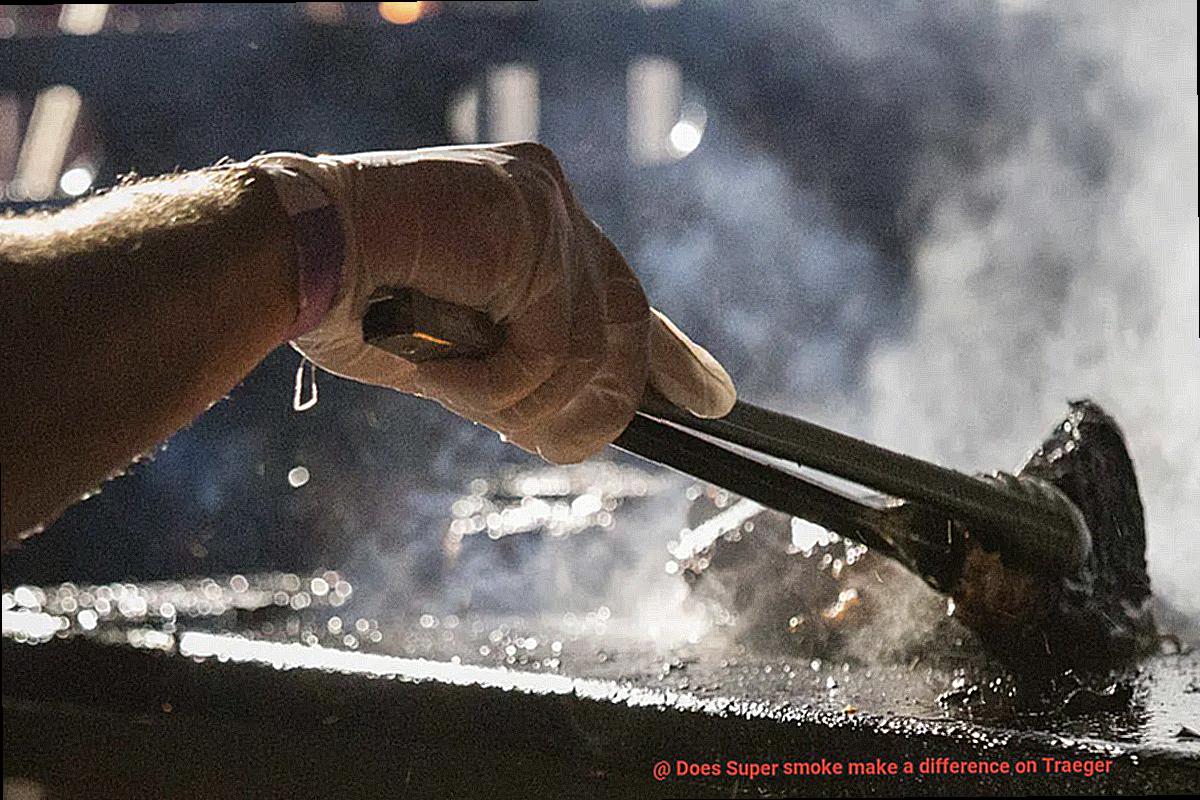
Different Types of Wood Pellets and Their Flavor Profiles
If you’re an avid griller, you know that the type of wood pellet you use can greatly affect the flavor of your dish when using a Traeger grill. Each type of wood has a unique flavor profile that can enhance or detract from the taste of your meat. Here are five different types of wood pellets and their flavor profiles:
Hickory is a popular choice for its strong, smoky flavor that pairs well with beef and pork. It’s a bold option that adds depth to your dishes, making it perfect for hearty meats.
If you’re looking for a bolder taste, try mesquite wood pellets. They have an even stronger, more distinctive smoky flavor that works well with beef and game meats like venison. Mesquite is best suited to those who love intense, bold flavors.
For a milder taste, applewood and cherry wood pellets are great options. Applewood has a slightly sweet flavor that is perfect for poultry and pork, adding a hint of fruitiness to your dishes. Cherry, on the other hand, has a subtle fruitiness that enhances the natural flavors of meat while adding a touch of sweetness.
Oak wood pellets are also versatile and work well with all types of meat. They have a neutral flavor that can be used as a base for other flavors, making them ideal for experimenting with different spice blends and marinades.
Traeger also offers their own line of pellets made from 100% hardwood. These pellets come in a variety of flavors such as maple, pecan, and alder. They are formulated to provide consistent performance and flavor when used with Traeger grills.
To enhance the smoky flavor of your grilled dishes on Traeger, try using “Super Smoke” mode on your grill. This mode increases smoke output for an even more intense smoky taste. It can be used with any type of wood pellet but may be particularly effective with milder woods like apple or cherry.
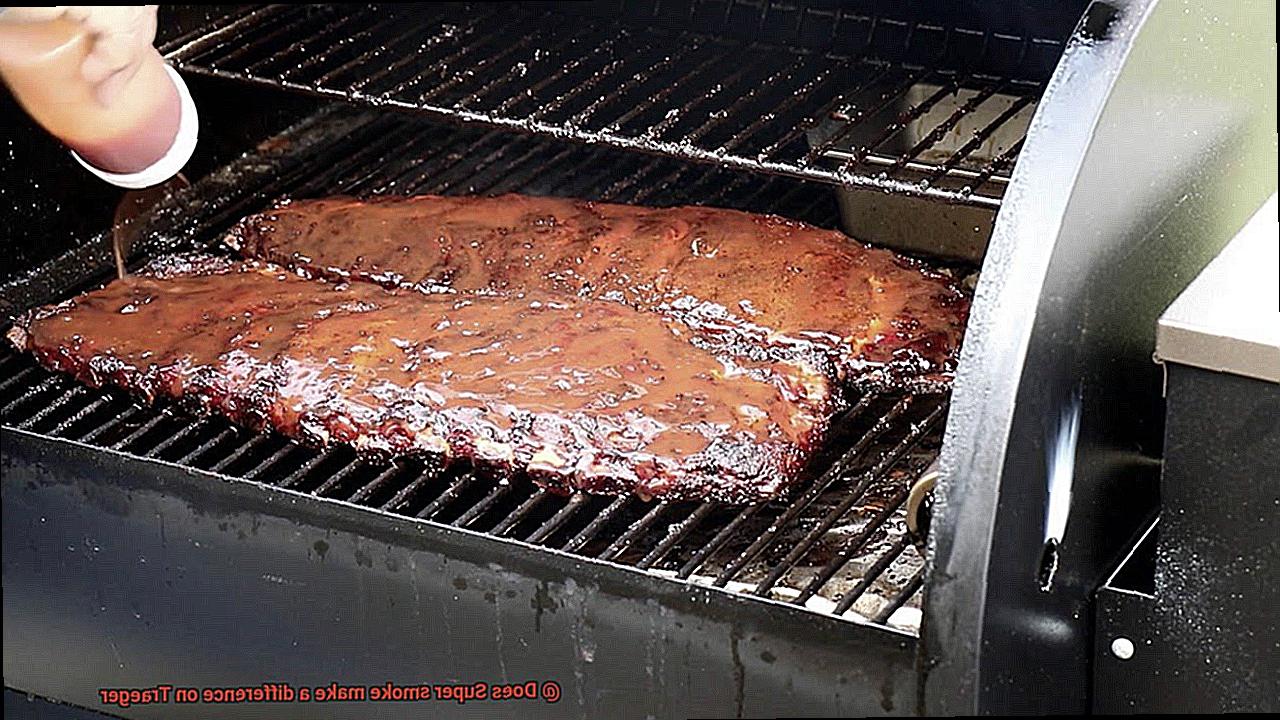
How to Choose the Right Wood Pellets for Your Grilled Food
Grilling is not just about cooking food; it’s about creating a culinary experience. The type of wood pellets you choose can make or break the flavor and quality of your grilled food. With so many options available on the market, it’s important to know how to choose the right wood pellets for your grilled food. Here are five tips to help you make the best decision.
Consider the Type of Meat You’ll Be Grilling
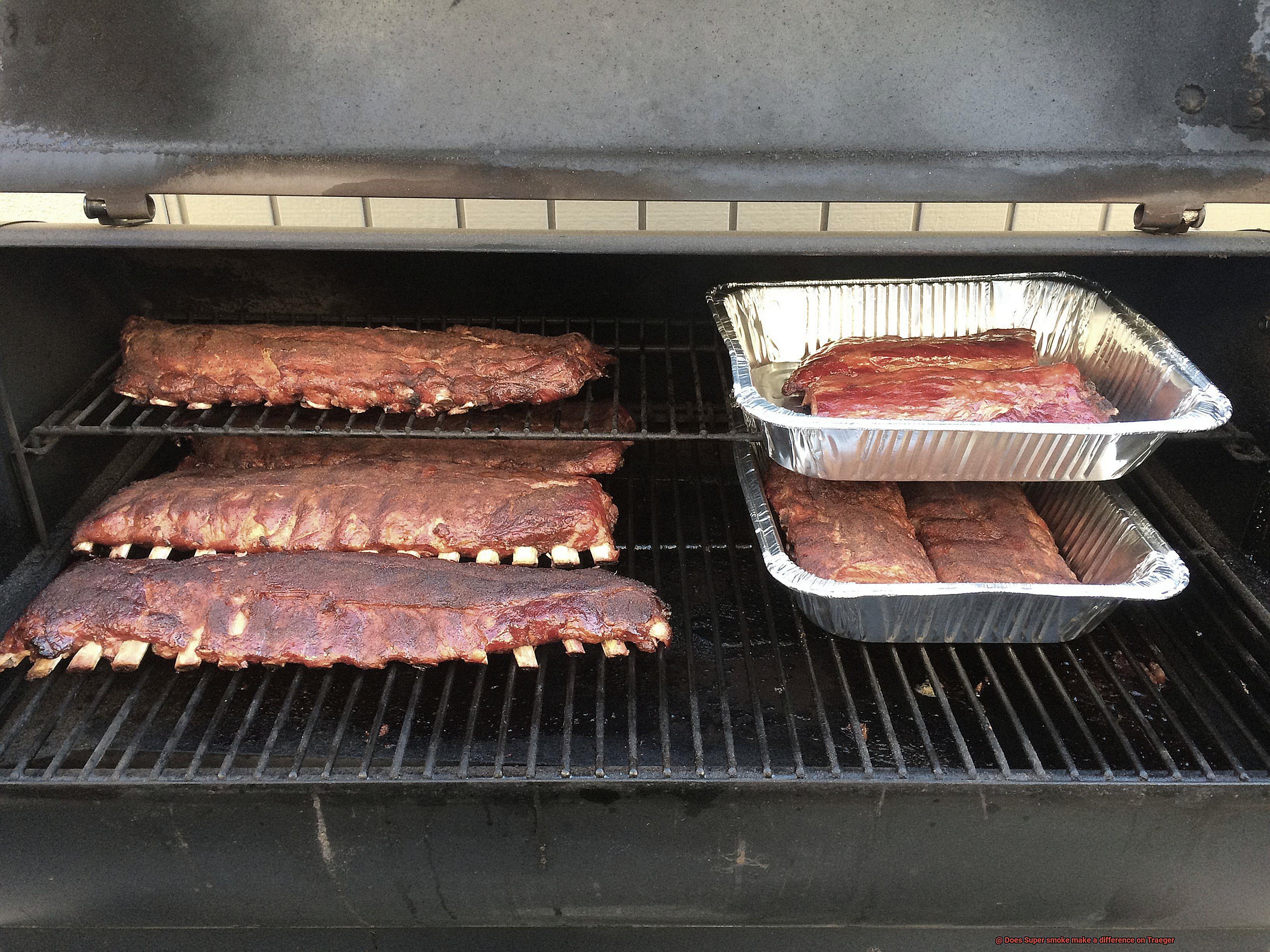
Different types of meat pair better with specific wood pellet flavors. For example, hickory is perfect for beef and pork, while fruitwood pellets like apple or cherry are ideal for poultry and fish. The type of wood pellet you choose can significantly impact the flavor of your food, so before selecting one, consider what type of meat you’ll be grilling.
Think About the Intensity of Flavor You Want to Achieve
The intensity of smoke flavor is another crucial factor to consider when choosing wood pellets. Some pellets produce a subtle smoke flavor, while others offer a stronger and more robust taste. Mesquite pellets have a strong and smoky flavor that may be overpowering for some dishes. If you’re not sure which one to choose, start with a milder flavor and gradually increase the intensity until you find the right match.
Consider the Quality of Wood Pellets
The quality of wood pellets is essential when it comes to grilling. Look for brands that use 100% natural hardwood with no fillers or additives. Lower-quality pellets may contain chemicals or sawdust that can affect the taste and safety of your grilled food. Always choose high-quality wood pellets to ensure safe and delicious grilled food.
Experiment with Different Types of Wood Pellets
To find the best match for your taste preferences, try mixing different flavors together to create a unique blend of smoke flavor. Don’t be afraid to experiment with different types of wood pellets until you find what works best for you. It’s a fun and exciting way to enhance the flavor of your grilled food.
Use Super Smoke in Moderation
If you’re using a Traeger grill, you can take advantage of the super smoke feature to enhance the smoky flavor of your food. However, use this feature in moderation as overusing it can lead to bitter and over-smoked food. It’s important to find the right amount for your desired taste.
U3x8mou0EBM” >
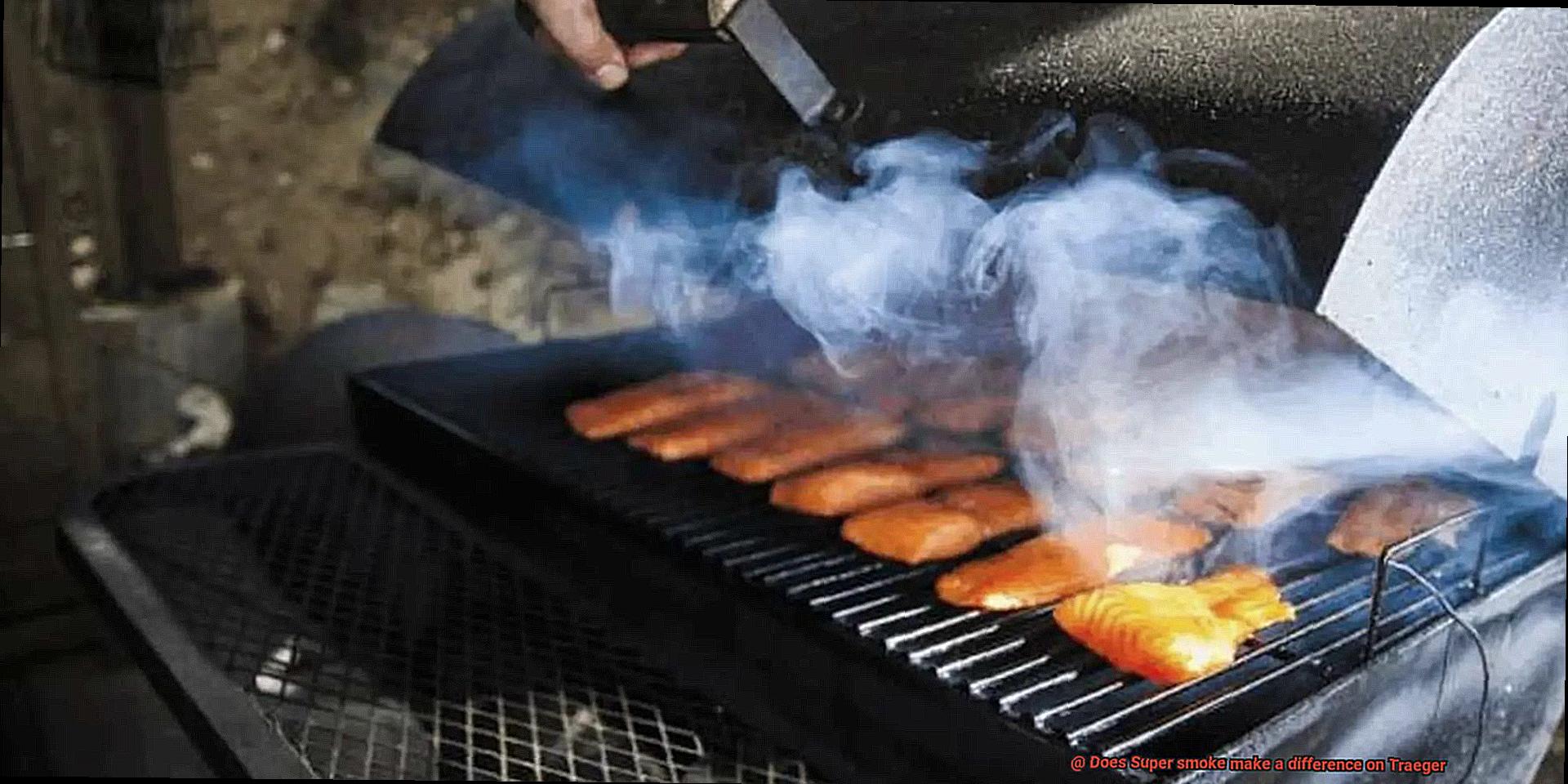
Conclusion
In summary, Traeger’s Super Smoke feature is a true game-changer for any grill master seeking to elevate their BBQ game. This innovative technology produces a denser and more flavorful smoke at lower temperatures, resulting in a deeper and richer smokiness that cannot be replicated with traditional smoking methods.
Super Smoke is incredibly versatile and can be used for various cooking techniques, including slow-cooking, roasting, and baking. It’s perfect for smoking delicate foods like fish or vegetables that require lower temperatures.
Although using Super Smoke may increase the overall cooking time of your meal and result in more ash and soot buildup on your grill, these drawbacks are overshadowed by the benefits. Super Smoke infuses more flavor into your food, helps maintain a consistent temperature throughout the cooking process, and saves you time by reducing the need for constant monitoring of your grill.
To use Super Smoke effectively, it’s crucial to select high-quality wood pellets, preheat your grill before activating Super Smoke, monitor the temperature of your grill while cooking, and clean it regularly.
Ultimately, whether or not you need Super Smoke for a particular dish will depend on personal preference and the specific recipe being used. Experimenting with different types of wood pellets and levels of smoke can help you find what works best for you.

